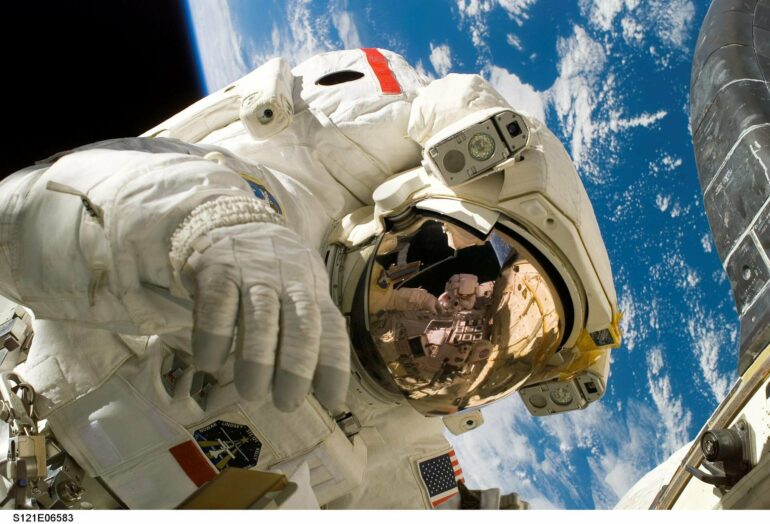A potentially better way to make oxygen for astronauts in space using magnetism has been proposed by an international team of scientists, including a University of Warwick chemist.
The conclusion is from new research on magnetic phase separation in microgravity published in npj Microgravity by researchers from the University of Warwick in the United Kingdom, University of Colorado Boulder and Freie Universität Berlin in Germany.
Keeping astronauts breathing aboard the International Space Station and other space vehicles is a complicated and costly process. As humans plan future missions to the Moon or Mars better technology will be needed.
Lead author Álvaro Romero-Calvo, a recent Ph.D. graduate from the University of Colorado Boulder, says that “on the International Space Station, oxygen is generated using an electrolytic cell that splits water into hydrogen and oxygen, but then you have to get those gasses out of the system. A relatively recent analysis from a researcher at NASA Ames concluded that adapting the same architecture on a trip to Mars would have such significant mass and reliability penalties that it wouldn’t make any sense to use.”
Dr. Katharina Brinkert of the University of Warwick Department of Chemistry and Center for Applied Space Technology and Microgravity (ZARM) in Germany says that “efficient phase separation in reduced gravitational environments is an obstacle for human space exploration and known since the first flights to space in the 1960s. This phenomenon is a particular challenge for the life support system onboard spacecraft and the International Space Station (ISS) as oxygen for the crew is produced in water electrolyzer systems and requires separation from the electrode and liquid electrolyte.”
The underlying issue is buoyancy.
Imagine a glass of fizzy soda. On Earth, the bubbles of CO2 quickly float to the top, but in the absence of gravity, those bubbles have nowhere to go. They instead stay suspended in the liquid.
NASA currently uses centrifuges to force the gasses out, but those machines are large and require significant mass, power, and maintenance. Meanwhile, the team has conducted experiments demonstrating magnets could achieve the same results in some cases.
Although diamagnetic forces are well known and understood, their use by engineers in space applications have not been fully explored because gravity makes the technology difficult to demonstrate on Earth.
Enter the Center for Applied Space Technology and Microgravity (ZARM) in Germany. There, Brinkert, who has ongoing research funded by the German Aerospace Center (DLR), led the team in successful experimental tests at a special drop tower facility that simulates microgravity conditions.
Here, the groups have developed a procedure to detach gas bubbles from electrode surfaces in microgravity environments generated for 9.2s at the Bremen Drop Tower. This study demonstrates for the first time gas bubbles can be ‘attracted to’ and ‘repelled from’ a simple neodymium magnet in microgravity by immersing it in different types of aqueous solution.
The research could open up new avenues for scientists and engineers developing oxygen systems as well as other space research involving liquid-to-gas phase changes.
Dr. Brinkert says that “these effects have tremendous consequences for the further development of phase separation systems, such as for long-term space missions, suggesting that efficient oxygen and, for example, hydrogen production in water (photo-)electrolyzer systems can be achieved even in the near-absence of the buoyant-force.”
Professor Hanspeter Schaub of University of Colorado Boulder says that “after years of analytical and computational research, being able to use this amazing drop tower in Germany provided concrete proof that this concept will function in the zero-g space environment.”
More information:
Álvaro Romero-Calvo et al, Magnetic phase separation in microgravity, npj Microgravity (2022). DOI: 10.1038/s41526-022-00212-9
Provided by
University of Warwick
Citation:
Making oxygen with magnets could help astronauts breathe easy (2022, August 12)



